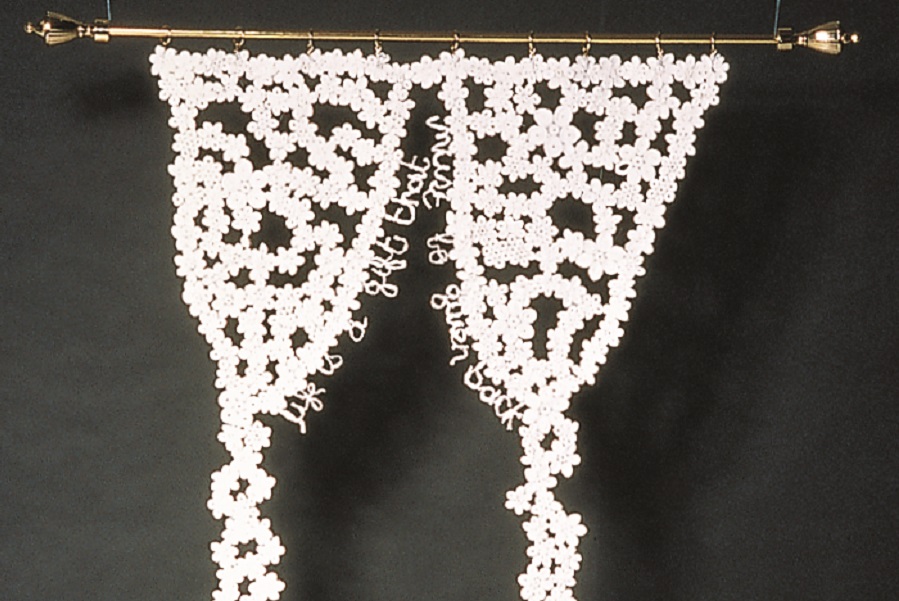Hodgeman concludes that a gift is not, as commonly thought, a gratuitous legacy, but a complex system of mutual obligations, very much part of the fabric of social bonding.
Glenys Hodgeman (SA)
Born 1964, Mount Barker, South Australia
The work of Glenys Hodgeman has developed directly out of her 'day–job' as an organ transplant co–ordinator. Her experience with organ donation – often referred to as 'the gift of life' – provoked an interest in the broader notion of gift–giving in social practice, the economy of the relationship, its forms and meanings. Through both her experience and research Hodgeman concludes that a gift is not, as commonly thought, a gratuitous legacy, but a complex system of mutual obligations, very much part of the fabric of social bonding.
The work Legacy recycles a crocheted tablecloth made for and given to Hodgeman by her grandmother. Hodgeman dissected the cloth which was worn and stained through the passage of time and use, reconstructed it and crocheted connecting parts to make a range of donor organ body parts: lungs, kidneys, heart and so on, finally painting the cotton with goauche. The intricate delicacy of the crochet filigree links with its subject: the complex emotional web involved in the transaction on the part of both gifting and recipient families.
Using a traditional craft technique called quilling, the work Curtain was made from paper death shrouds that cover bodies in transport from hospital to the funeral home or mortuary. Hodgeman's use of craft practices – time–consuming and process–oriented, involving repetitive actions – is part of her own gift-giving in this work. It honours the obligations of the subject's gravity – the weight of responsibility involved in dealing with other people's stories.
Robyn McKenzie from her Samstag catalogue essay, Art and Research
2001 Anne & Gordon Samstag International Visual Arts Scholarship
2001 MFA, Goldsmiths College, London, UK
1999 Bachelor of Visual Arts (Honours), South Australian School of Art, University of South Australia, Adelaide
1998 Bachelor of Visual Arts, South Australian School of Art, University of South Australia, Adelaide
Artist's website
http://www.glenyshodgeman.com/

